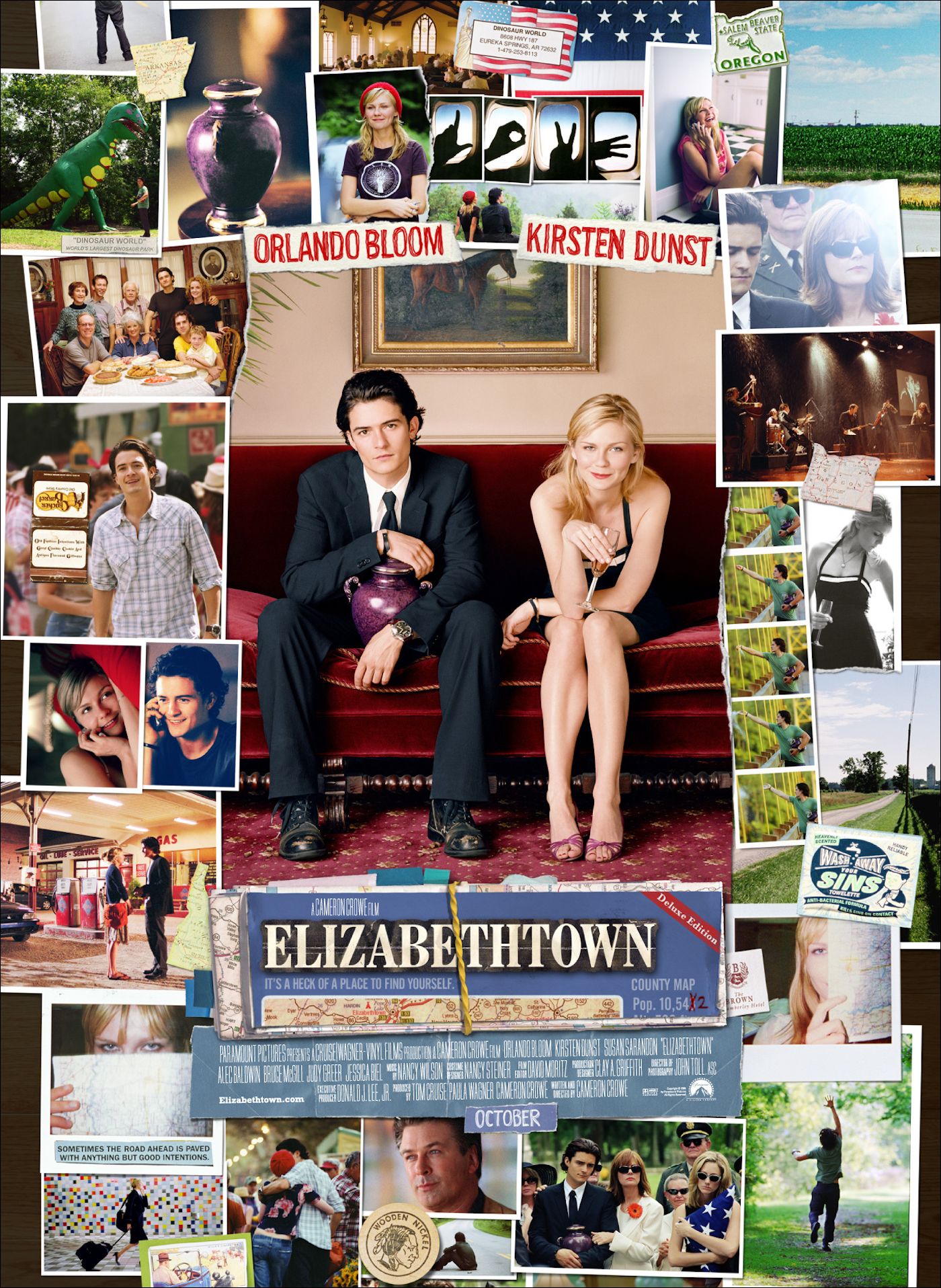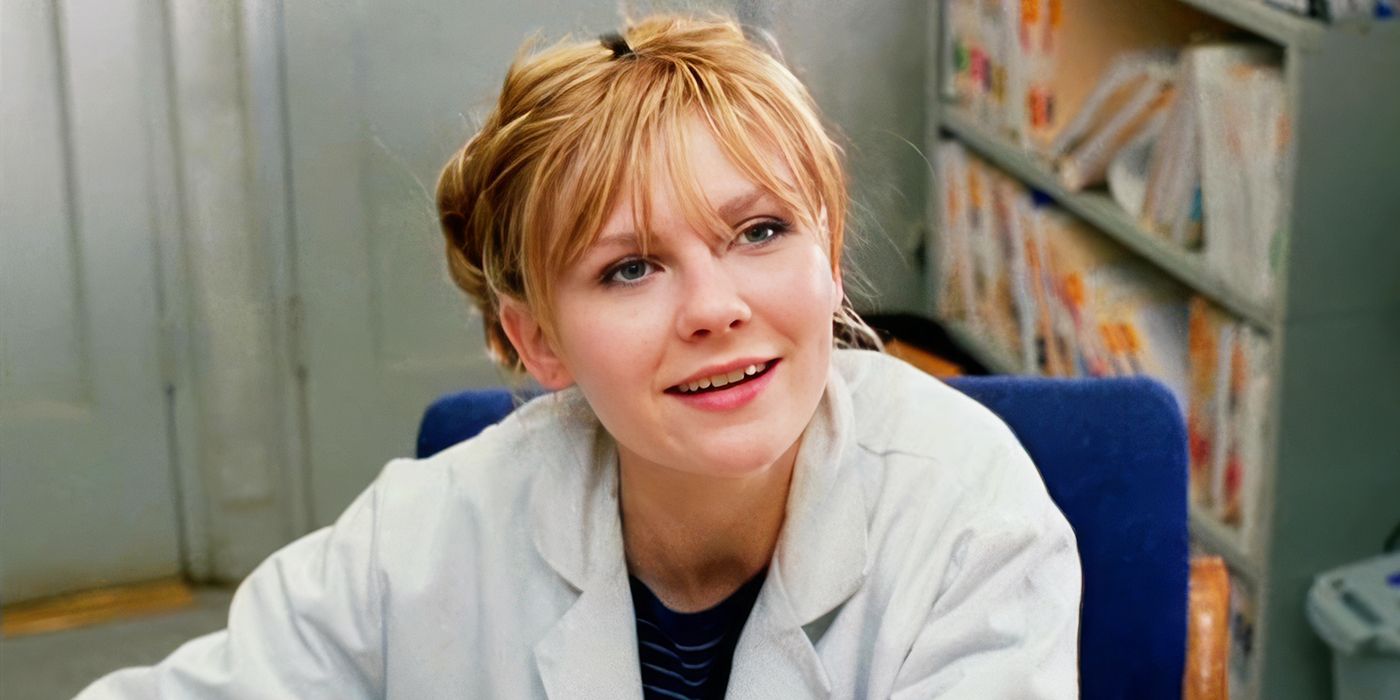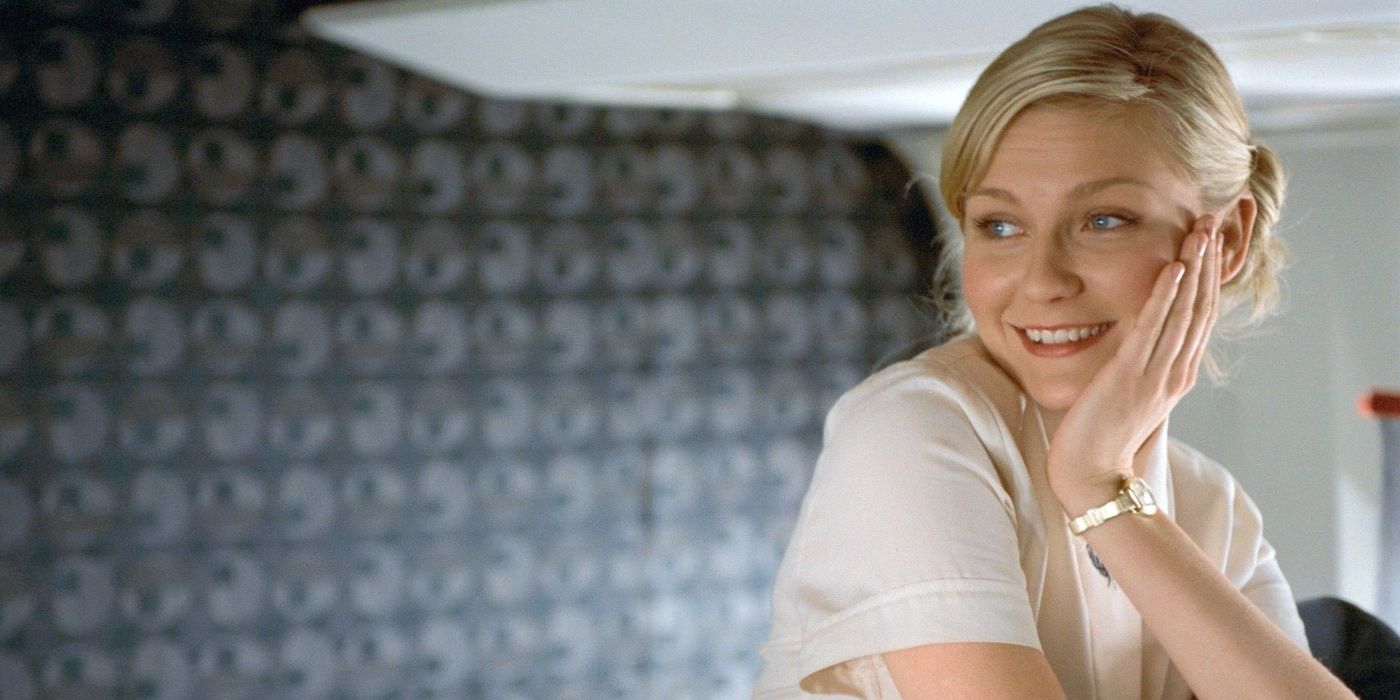The Big Picture
- In Elizabethtown, Kirsten Dunst’s Claire is defined by her all-consuming devotion to helping a gloomy man, making her the Original Manic Pixie Dream Girl.
- A critique on the character’s lack of depth and autonomy ignited the discussion on the harmful trope’s impact on female representation.
- The Manic Pixie Dream Girl term, born with good intentions, took on a life of its own, becoming a watered-down, controversial concept.
January 25th, 2007, a date which will live in infamy for that is the day that a phrase was born that swept across the pop culture landscape like a scourge, hijacking conversations around the representation of female characters in film. If you hyphenated the phrase, it would sound like a fictional weapon used in a James Bond film, with just as much destructive power. A phrase that forever stigmatized the idea of female characters defined by their colorful outlooks on life, unique senses of style, and ever-perky demeanors. Yes, it’s time to discuss “the Manic Pixie Dream Girl,” where it came from, and why. While it’s usually tricky to decide on the real “firsts” in history, this is not one of those cases, as there’s one specific film that serves as Patient Zero. Please welcome to the stage, the one and only Elizabethtown.

Elizabethtown (2005)
Elizabethtown follows aspiring shoe designer Drew Baylor (Orlando Bloom) who gets fired from his high-profile job after a project fails to land. To make his situation worse, his girlfriend, Ellen (Jessica Biel), leaves him, and he quickly becomes depressed. His plans to end his life are interrupted by the news of his father’s death, and he flies home to his Kentucky hometown meeting Claire (Kirsten Dunst) on the way, who helps him find light in his life.
- Release Date
- October 14, 2005
- Director
- Cameron Crowe
- Runtime
- 123
- Main Genre
- Comedy
Kirsten Dunst’s Character in ‘Elizabethtown’ Is the Original Manic Pixie Dream Girl
For those who have thankfully forgotten this relic of mid-2000s twee, Elizabethtown was yet another version of Cameron Crowe‘s life mission to remind us of the spiritual plight of immensely successful white dudes who just can’t figure out what life is really about. It’s a formula that already worked for him on Say Anything and Jerry Maguireespecially — but third time wasn’t the charm. Drew (Orlando Bloom) was a successful shoe designer whose last shoe was so flawed that it cost the company he worked for nearly $1 billion. This leads him to almost kill himself until he’s told his father has died and must go home for the funeral. Along the way, he meets flight attendant Claire Colburn (Kirsten Dunst)who will be his guardian angel to help him through his emotional turmoil. This leads to an inevitable romantic evolution so lacking in tension or stakes that it makes your average Marvel film feel like it was directed by Adrian Lyne. Part of that lack of tension comes in how underwritten Claire is as a character, which no amount of Kirsten Dunst magic can remedy, sadly.
On paper, Claire doesn’t seem so bad, as she does have some notable personality traits and fixations. She’s incredibly forthright and bubbly, she’s ambitious about her career as a flight attendant, and she’s unapologetic about her wants and needs. The problem is that she only has that one personality gear, she has barely any life outside of her job, and her only want and need is to bend over backward to help Drew with his life crisis. Her only trace of an external life is still tied up in a man, as she allegedly has a boyfriend named Ben, who never appears and, honestly, may not even exist. Her whole life seems to revolve around Drewwhether that be staying up literally all night to talk with him on the phone, giving up her vacation time to help him with his father’s funeral, and chasing him down in an airport just to tell him where the car rental service is. We love to see someone be emotionally available and supportive, but when you’re doing stuff like this for someone you’ve just met, it becomes insanely offputting. Perhaps some of this could be made plausible if the film had more madcap energy, but Crowe’s direction is so self-serious and committed to romantic whimsy stuffed between two slices of white bread that it becomes a kind of madness.
How Did the “Manic Pixie Dream Girl” Term Start?
Such madness struck A.V. Club critic Nathan Rabin when he first viewed the film when it premiered. As a (at the time) devoted Cameron Crowe fanatic, he was heartbroken by how much the film disappointed him, and he took particular displeasure with the character of Claire Colburn. A full two years after its debut, he posted an article where he retrospectively discussed the failure of
Elizabethtown as a movie and devoted a full paragraph to analyzing the pitfalls of her character. He officially coined her a “manic pixie dream girl,” which he described as a girl who “exists solely in the fevered imaginations of sensitive writer-directors to teach broodingly soulful young men to embrace life and its infinite mysteries and adventures.”
He lamented how they were an “all-or-nothing proposition” that would inspire the audience to either love them wholeheartedly or utterly despise them. One year later, the A.V. Club published a list of “16 films featuring the Manic Pixie Dream Girl,” which retroactively proclaimed numerous characters throughout history as MPDGs, such as Sam (Natalie Portman) from Garden StateSusan Vance (Katharine Hepburn) from Bringing Up Babyand the titular Annie Hall (Diane Keaton). For the sake of capitalizing on a half-clever phrase made with good intentions, all of these uniquely drawn women, who defined and then transcended vast eras of American film history, were squashed down into a newly packaged critical commodity.

Kirsten Dunst’s Mary Is the Unsung Hero of ‘Eternal Sunshine of the Spotless Mind’
Justice for Mary Svevo!
With that one-two punch, the term got shot into the pop culture ether, where it quickly took on a life of its own and, as is fated to happen to all terms born on the internet, quickly became watered down and bastardized. It was originally a glib provocation meant to challenge male filmmakers to figure out how to create women that served as more than a freshly repainted model of the mother/therapist combo that the MPDG promised. Eventually, it had been distorted into misogynistically motivated attacks on the very female characters that were, whether made sincerely or cynically, meant to expand the scope of how many different modalities of womanhood could be shown to the world. This malicious reversal of intention, where female artists got the brunt of criticism for the works of men, speaks to the ever-present no-win territory that women find themselves in when they simply exist in public. You can be as quirky and full of joie de vivre as you want, and you’ll still be subjected to the angry dismissal of those who see that as an excuse to dog-whistle their quiet desire to see you be shut down.
The Concept of the Manic Pixie Dream Girl Became Scrutinized and Actively Torn Down
The blowback against the MPDG reached such a fever pitch that it became post-modern and dissected rather quickly. Films like (500) Days of Summer and Ruby Sparks attempted to critique the trope by using their narratives to flip the mirror back on the male protagonists, interrogating why men would even want women like that in their lives. Other films, like Silver Linings Playbooksought to reinvent them by providing greater intimate detail about their internal lives and giving them more autonomy in the romantic choices they made. But that did little to stop the general vibe of irritation and distaste that had festered among artists and critics, expressing a desire to move on from the whole thing entirely.Zooey Deschanel expressed irritation at getting “sent scripts and you see you’re always playing someone’s girlfriend when you want to be the central role, it’s so depressing.” When promoting Ruby Sparks as a star and writer, Zoe Kazan fully disowned the concept and the notion that her film was all about that trope, saying that it was “a way of describing female characters that’s reductive and diminutive, and I think basically misogynist,” and pointed out how “it’s really reflective of the man who is looking at them, and the way that they think about that girl.”
This turn against the trope reached such a fever pitch that, just 7 years after its official inception, Nathan Rabin himself stepped up to apologize for its existence. On July 15, 2014, he posted an essay to Salon in which he explained why he thought the phrase could be used for good, arguing that it “is a fundamentally sexist one, since it makes women seem less like autonomous, independent entities than appealing props to help mopey, sad white men self-actualize. Within that context, the phrase was useful precisely because, while still fairly flexible, it also benefited from a certain specificity.” He showed how fundamentally aware he was of the icky paradox of its execution in that “I coined the phrase to call out cultural sexism and to make it harder for male writers to posit reductive, condescending male fantasies of ideal women as realistic characters. But I looked on queasily as the phrase was increasingly accused of being sexist itself.” He had no idea that calling out one poorly written character from a dreadfully average dud would spark a dialogue that would eventually eat its own tail, actively undoing any potential good that it could have done. In terms of undoing the collateral damage for the foreseeable future, he put it best: “Let’s all try to write better, more nuanced and multidimensional female characters: women with rich inner lives and complicated emotions and total autonomy, who might strum ukuleles or dance in the rain even when there are no men around to marvel at their free-spiritedness. But in the meantime, Manic Pixies, it’s time to put you to rest.”
Elizabethtown can be watched in the U.S. on Max.

